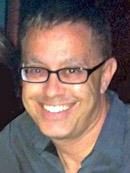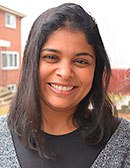
THE BRIDGE TO COLLEGE
The College Personal Statement – What It Is, and What It’s Not

It’s that time of year again: essay season!
An important part of the undergraduate admissions puzzle, the personal statement essay can be the difference between acceptance and rejection. But there is a lot of bad information about what makes for a great essay. We want you to be well-informed.
Let’s begin with five things the personal statement is not:
One: It is not an expanded resume. The application already has a place for that information. Do not restate your activities, accomplishments and achievements. “More of the same” does not add value. In fact, it’s downright boring. Although you can use your extracurricular activities as the setting for a learning moment, focus on the method, not the results. But please avoid emphasizing your “merit.”
Two: The personal statement is not a writing assignment. You do not need to follow a prompt. In fact, prompt 7 of the Common Application says explicitly: “Share an essay on any topic of your choice.” This effort is not about answering a question. It’s about sharing yourself to help them understand you. Seriously, please do not fret over “which prompt should I use?” If you wonder about the prompts, you are missing the point.
Three: This is not a writing sample. They are not picking an essay. They are selecting a person. Don’t be sloppy, but don’t overstress about grammar, punctuation, syntax, linking verbs and the like. They’re going to skim your essay, and they know you’re not a perfect writer. In fact, being too perfect is a red flag that you had too much help.
Four: The story in your essay need not be a big, world-changing event. In fact, small moments make for better stories. (Besides, if you do actually change the world, your essay will be unnecessary. Cure cancer or Covid-19, and you’re getting in regardless of any essay.)
Five: Please don’t be a “downer.” Avoid negativity. Admissions readers review literally thousands of essays each year, sometimes 60 files per day. They are tired and very, very overworked. Serious discussions about death, depression, drugs or divorce are not the way to inspire positivity. Making them feel bad with sad stories will not help them feel good about you.
Now, here are five things you should do:
One: present the proper message. A Personal Statement is about you, but it’s also about “us.” Colleges are trying to place you into their communities. They want to predict you in their groups. Don’t be the only person mentioned in your essay. Show yourself with others. Fact: The best essays are both personal and interpersonal.
Two: use the best possible essay structure. All writings should have a purpose, and their structures should reflect those purposes. The structure of a fiction novel like War and Peace is much different than the structure of the instructions for building a bookcase from Ikea. One has twists and turns; the other better not! Personal statements should have a different structure than essays that ask "why our school?” Essays of 300 words should have a different structure than those of 50 words. You get the idea: pay attention to how the admissions office can best absorb your information.
Three: incorporate deep, specific detail. As we always say around the office: Details win! If a reader can visualize something, then they can understand the message better and embrace the applicant better. If you want them to see something, you have to give them something, but the only things that are “things” are called “nouns.” Verbs, adjectives and adverbs do not create visualization as effectively.
Four: Express your voice. Be real, be genuine, be honest, be conversational, be you! This is not formal writing. This is a personal statement. Admissions is a selection process, one in which a primary concern is whether the readers like you as a good fit in their campus community. Don’t be stuffy. Be loose and natural.
Five: Show some self-reflection. Let them understand that you learn by experience. Use the essay not only as a story that reflects your nature, but also as a springboard for your further growth. Think of it this way: having an amazing day is good; learning a lesson from an amazing day is great; applying that lesson to other facets of life is fantastic.
If there is one takeaway from these 10 suggestions, let it be this: make the essay your personal statement.
Robert LeVine is the founder and CEO of University Consultants of America, an independent educational consultancy assisting students around the world with applications to colleges, universities and graduate schools. For more information, call University Consultants of America, Inc. at 1-800-465-5890 or visit www.universitycoa.com
FAMILY MATTERS
Chasing the Dream of Representation

One of my favorite post-quarantine traditions is junk food Friday nights with my daughters. We pick up terrible fast food and settle down in front of the TV. I then force upon them great quantities of ’80s, ’90s and even some early ’00s shows and movies, many of which haven’t aged well (“Neverending Story,” anyone?).
Currently, we’re on season four of “Gilmore Girls.” Like many comfort shows of this era, stepping back into the cozy environs of Stars Hollow where nothing really terrible ever happens has been for the most part, enjoyable. Except for the episode where this dialogue happened:
LORELAI: Oh, you’re ordering the Indian food?
RORY: Yup.
LORELAI: Good, enjoy. Can you burn the house down afterward, ‘cause that’s the only way we’ll get the smell out.
My mouth fell open. It was so casually, breathtakingly rude. And this show came out in the 2000s — we’re not talking about some distant past when casual racism was acceptable.
The sad part? We were so starved for representation back then that just the mention of Rory ordering Indian food probably caused a brief thrill of recognition and response.
Yes, we’ve come a long, laborious way. We went from a brown face Peter Sellers in “The Party,” to Amrish Puri eating monkey brains in the “Temple of Doom,” to heavily accented convenience store clerk Apu on “The Simpsons” (for which Hank Azaria publicly apologized this year). Things got better, and people like Mira Nair made movies like “The Namesake.” We were still only telling purely Indian stories, but at least they were integrated into the American landscape in which we lived.
And now? We have Hasan Minhaj filling seats around the country with his “The King’s Jester” tour this fall. Aziz Ansari’s “Master of None” won critical acclaim and several industry awards. Maitreyi Ramakrishnan broke barriers by starring in Mindy Kaling’s Netflix series “Never Have I Ever.” Disney Junior introduced “Mira Royal Detective,” a show I wish my girls would have had when they were little, with an all-South-Asian cast and creative crew and no ridiculous accents.
But while all this progress and control over the narrative is fantastic, it’s still not enough. True representation, as my frustrated 16-year-old vented to me, is more complex than just seeing brown people on screen. True representation will be when there doesn’t have to be “the Indian girl TV show.” True representation will be when we are just cast as interesting characters whose ethnicity is just one part of their story. It has started to happen (Jameela Jamil and Tiya Sircar in “A Good Place,” Irfan Khan in “Jurassic World,” or Manish Dayal in “The Resident”), but it will take a lot more work to undo and overcome years of stereotyping.
Who cares, you might ask. It’s just entertainment! But on-screen stereotyping is harmful because it reflects and reinforces what we as a society find to be acceptable. Take this seemingly innocuous incident that occurred in one of my younger daughter’s classes while e-learning this past year. During a conversation about mental health, the topic of yoga and meditation came up. Looking around the screen, the teacher called on a South Asian classmate (who was born and raised in America) to add insight to the discussion with expertise from “his country” – because of course, every brown kid surely meditates after breakfast before signing in for his first zoom class. It reminded me of a morning when I was volunteering at the media center at my daughters’ elementary school. The Internet went down, and another volunteer asked if I could fix it because, “Aren’t you guys good at that stuff?”
Being associated with yoga or computer proficiency aren’t bad things in themselves — I’m flattered anyone would associate me even erroneously with technological proficiency — but they are lazy stereotypes. And dismantling these notions onscreen is one way to allow for more authentic, diverse and realistic expressions of our identities, which will hopefully translate to real life as well. We owe it to ourselves and our children to demand better, whether it’s from the screen … or the audience.
Anu Varma Panchal is a mother of two and owner of www.YourEditingSolutions.com